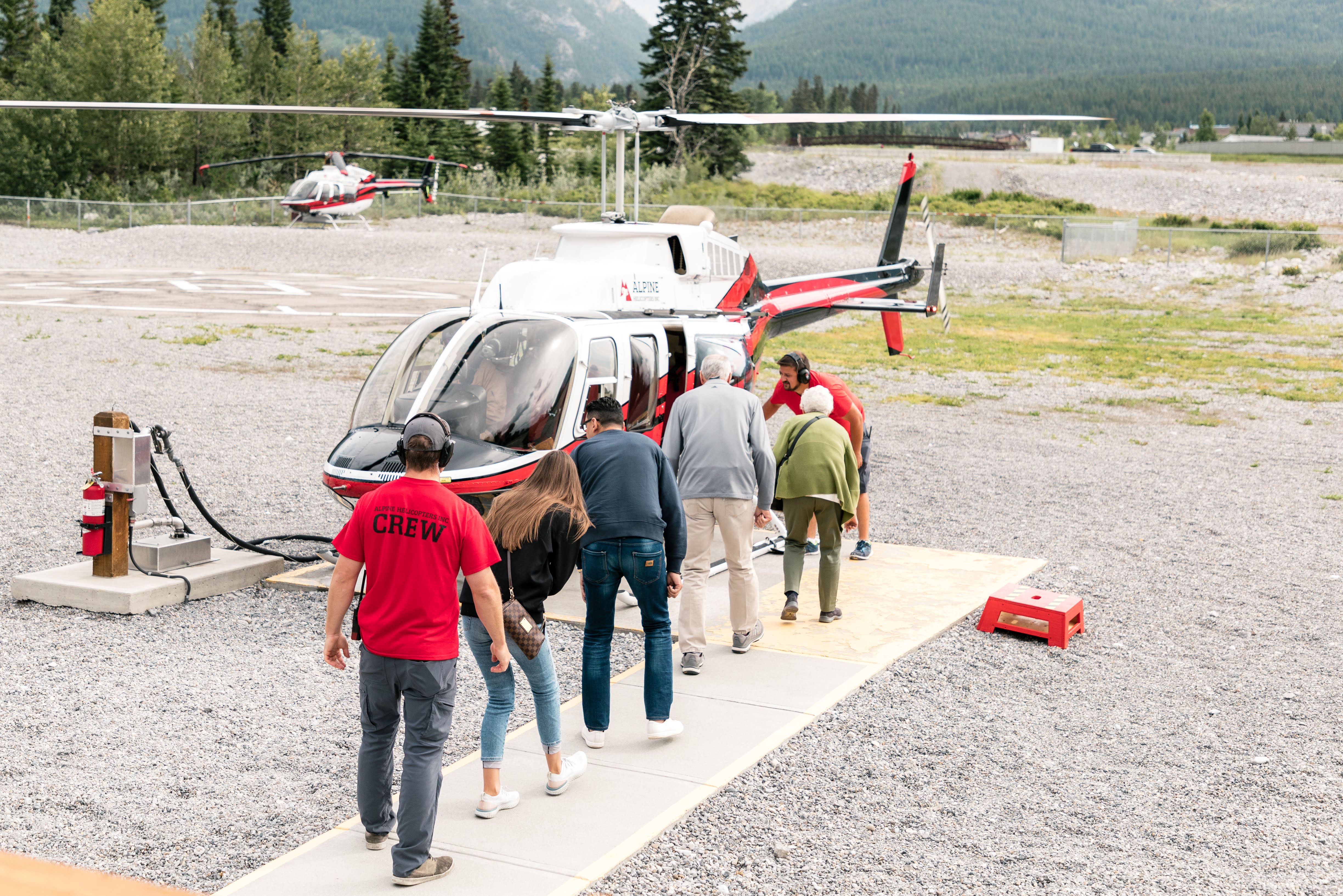Introduction
To build the Alpine Helicopters Inc. (‘Alpine’) Accessibility Plan, we looked at eight important areas of our business and how we could make them more accessible. These areas are:
Organization-Wide Initiatives
Status : In Progress
The Built Environment (CTA and ACR Regulations)
Status : In Progress
Employment
Status : In Progress
Information and Communication Technologies (ICT) (CTA and ACR Regulations)
Status : In Progress
Communication, Other Than ICT
Status : In Progress
The Procurement of Goods, Services and Facilities
Status : In Progress
The Design and Delivery of Programs and Services
Status : In Progress
Transportation (for passengers)
Status : In Progress
Compliance Regulations
Alpine Helicopters has chosen to publish one Accessibility Plan that is in compliance with both:
1. Accessible Canada Act (ACA), Section 60, and;
2. Accessible Canada Regulations (ACR).
Alpine recognizes its requirement to notify both the CTA within 48 hours of the publication of these documents and the Accessibility Commissioner of the publication of its accessibility plan and feedback process description.
Alpine Helicopters Accessibility Plan
In the next three years, Alpine will enhance accessibility across its operations by implementing comprehensive initiatives, including improving the accessibility of its built environments, ensuring its digital platforms meet accessibility standards, integrating accessibility into procurement and service delivery, providing tailored training for staff to better serve customers with disabilities, and establishing clear processes for gathering and addressing accessibility feedback, all while fostering an inclusive culture for both employees and passengers.
Feedback
We are open to feedback on our plan and about accessibility at Alpine. You can give us your feedback using one of the following methods:
Option 1: Mail: Alpine Helicopters Inc.
1295 Industrial Rd.
Kelowna, B.C.
V1Z 1G4
Option 2: Email: HR@Alpinehelicopters.com
Option 3: Online Feedback Form: https://forms.gle/D9LP3jUXx44cVgd7
Statement of Commitment
Alpine is dedicated to ensuring accessibility for everyone—our customers, employees, partners, and members of the public, including those with disabilities. We understand that true diversity in our organization is impossible without accessibility.That’s why we are fully committed to enhancing accessibility throughout our business.
We recognize that people with disabilities are the true experts in their experiences and in accessibility itself. To foster a culture of inclusion, we are eager to build relationships and consult with individuals with disabilities, learning directly from their insights. This collaboration will be vital as we work to achieve the goals set out in our accessibility plan.
Furthermore, we are committed to removing barriers whenever we encounter them, even if they fall outside this plan. This initiative marks a significant step forward for Alpine, but it’s just the beginning. We pledge to keep accessibility at the forefront of everything we do.
Description of Alpine Helicopters Inc
Alpine has a strong history in aviation with its roots going back to 1961.Alpine is a privately-owned, Western Canadian based, helicopter operator with locations in Kelowna, B.C. (head office) and satellite bases located in Golden, B.C., Canmore, A.B., Calgary, A.B., Kananaskis, A.B., Grimshaw/Peace River, A.B., and High Level, A.B.
Alpine provides non-scheduled helicopter services across four main specialty areas related to mountain flying and long-line lifting applications: heli-skiing, mountain rescue, forest fire suppression, and sightseeing. Other operations can include: aerial applications, power and pipeline maintenance, transportation and supply services in remote locations, and other aerial utility applications.
Contact Information and Feedback Process
Alpine welcomes feedback from our employees, customers, and members of the public about our Accessibility plan and accessibility in general at Alpine.
What feedback can I provide?
● You can provide feedback about Alpine’s Accessibility plan.
● You can provide feedback about barriers encountered when dealing with Alpine.
● Feedback can be provided anonymously. You will receive an acknowledgment of receipt unless you submitted the feedback anonymously.
How will my feedback be used?
● Your feedback will be shared with and considered by the team(s) responsible for accessibility at Alpine.
● Your feedback may be actioned during the length of the current plan or considered for a future plan.
● Your feedback and how it was considered will be included in our progress reports.
● Your feedback will be retained for a period of 7 years.
How can I provide feedback?
● Mail, email, and online form.
Alternative Formats
You can request alternative formats of the Alpine Accessibility Plan or the description of our feedback process.
To request this plan or the feedback process in an alternative format, please contact:
● Mail
● Email
● Online feedback form
We will respond to requests for other formats as soon as we can. For each alternative format, Alpine will provide a copy within a certain number of days:
● Print: available within 15 days of the initial request.
● Large print (increased font size): available within 15 days of the initial request.
● Braille (a system of raised dots that people who are blind or who have low vision can read with their fingers): available within 45 days of the initial request.
● Audio (a recording of someone reading the text out loud): available within 45 days of the initial request.
Definitions
The following definitions apply throughout this plan:
● Disability: Any impairment, or difference in physical, mental, intellectual, cognitive, learning, or communication ability. Disabilities can be permanent, temporary, or can change over time.
● Barrier: Anything that might hinder people with disabilities from full and equal participation. Barriers can be architectural, technological, and attitudinal, based on information or communications, or can be the result of a policy or procedure.
● Accessibility: The design of products, devices, services, environments, technologies, policies, and rules in a way that allows all people, including people with a variety of disabilities, to access them.
AREAS DESCRIBED UNDER SECTION 5 OF THE ACA

CONSULTATIONS
Consultation Overview
Alpine is dedicated to valuing the insights of individuals with disabilities. To maintain this commitment, we will engage with people who have disabilities throughout the implementation of this plan. Additionally, we will involve individuals with disabilities in the development of other significant projects at Alpine. The subsequent sections of this plan outline how we consulted with people with disabilities during its preparation. We understand that ongoing consultations are essential, and we are committed to building trusting relationships with individuals with disabilities to facilitate effective collaboration moving forward. For this plan, we collected feedback from individuals with disabilities through surveys directed at both employees and stakeholders.
Consultations with Persons with Disabilities
To get the insight of persons with disabilities, Alpine utilized the disclosed information collected from
the Employment Equity Survey and contacted those who disclosed disabilities, or, who are close to
someone with a disability. These individuals provided direct information and feedback on accessibility
barriers they have noticed while working at, or closely with, Alpine. The most common feedback
received from employees relates to accessibility barriers in the built environment of Alpine’s physical
spaces

CONCLUSIONS
Ensuring that all areas of our operations are inclusive for people with disabilities is a top priority for
Alpine. While we recognize that we are in the early stages of our accessibility journey, we are committed
to making progress. We will continuously review our practices to identify and remove any barriers to
accessibility. Understanding that this is an ongoing effort, we are dedicated to consulting with
individuals with disabilities and building a strong culture of accessibility across the company.











